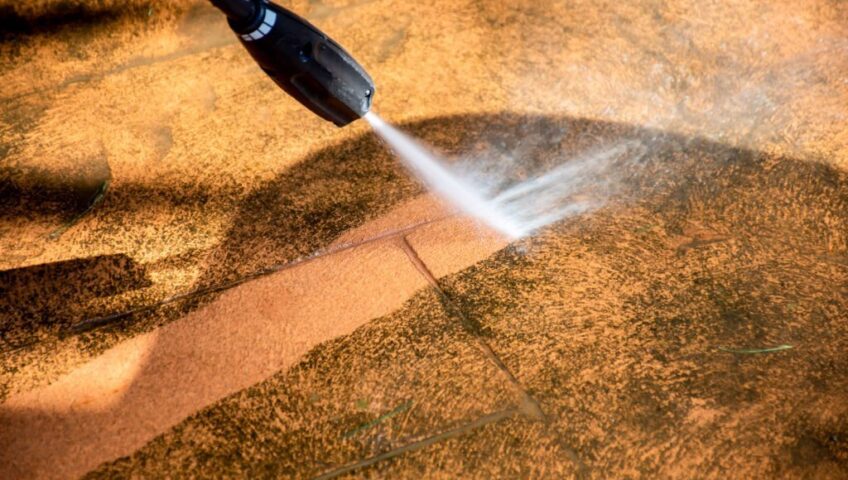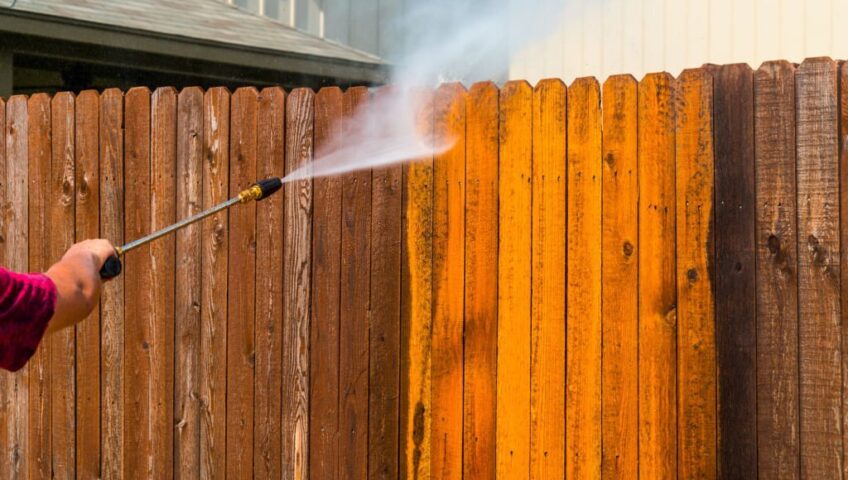
How Much psi to Clean Concrete Driveway?
No one likes a muddy driveway and sometimes, so much dirt has accumulated over the years that you can’t tell whether that shady brown-gray tone was original to the property! Trust us–it’s not! Your driveway can appear unpleasant due to dirt, filth, and discoloration. Cleaning it can bring it back to its former glory and improve the appearance of your house. Salt, oil, and other chemicals can also have an impact on concrete, weakening the surface. Regular cleanings of these compounds might help your driveway last longer. Pressure washing can save the look of your property and driveway through its high-powered cleaning system. If you haven’t heard of pressure washing or you’re a newbie, don’t worry. We are going to teach you everything you need to know about cleaning a concrete driveway. Read on and then when you’re done, enjoy a smooth parking experience in your refreshed driveway!
What is PSI?
PSI, or “pounds per square inch,” is a measurement of pressure used to gauge a pressure washer’s strength. It quantifies the force per square inch that the water being ejected from the pressure washer’s head exerts. The pressure washer’s power and ability to remove stubborn filth and grit from surfaces increase with increasing PSI. Overall, pressure washers typically have a range of 1000 to 4000 PSI.
Why does PSI matter?
Understanding PSI is crucial for pressure washing since it determines how much pressure a device can produce. Moreover, the cleaning jobs a pressure washer is best suited for and how successfully it will remove dirt, grime, and other materials from surfaces depend on its PSI rating. A greater PSI rating indicates a higher degree of pressure and can result in more effective cleaning, but it can potentially harm some surfaces if not handled correctly. To guarantee both successful washing and protection, it is crucial to comprehend the PSI of a pressure washer and select the appropriate one for the work at hand.
How much PSI to clean concrete?
The volume of filth and dirt that has to be removed, as well as the kind of surface, determine the pressure needed to clean concrete. Cleaning dirt and grime off concrete surfaces usually just requires a pressure washer with a range of 1500–2000 PSI. However, a pressure washer with a greater PSI capacity might be required if the concrete surface is very muddy or contains stubborn stains. Additionally, it’s crucial to bear in mind that a greater PSI doesn’t always equate to a better clean and, if improperly applied, can actually harm concrete. We recommend starting with a lower PSI and adjusting as necessary.
PSI for an electric pressure washer
An electric pressure washer works by pumping water from a faucet and pressurizing it before spraying it through a nozzle to boost the cleaning power of the water. It is a flexible tool for cleaning jobs outside since the pressure may be altered to meet the cleaning requirements of various surfaces and materials. In most cases, a pressure washer with 2000 to 3000 PSI is enough for cleaning concrete. However, some stubborn stains or significant filth accumulation may call for a pressure washer with a greater PSI, such as 4000.
PSI for a gas-powered pressure washer
Unlike electric pressure washers, a gas-powered pressure washer employs a gasoline engine to push high-pressure water via a pipe and nozzle. Compared to electric pressure washers, gas-powered pressure washers frequently have higher power and a wider operating range. A gas-powered pressure washer must normally have a PSI rating of at least 2,500 to 3,000 in order to effectively clean concrete. To properly clean concrete surfaces, a pressure washer with a sufficient water flow rate (measured in GPM or gallons per minute) is also essential.
Conclusion
Doing pressure washing on your own is great and we believe you’ve become an expert after this but, rather than getting your own machine, why not save yourself the trouble and employ a pressure washing service? A professional pressure washing team can help restore that dulled driveway to look brand new at a cheaper cost and quickly! Whatever you choose to do, we hope you have benefited from our quick tips on PSI and the benefits of cleaning your driveway!

